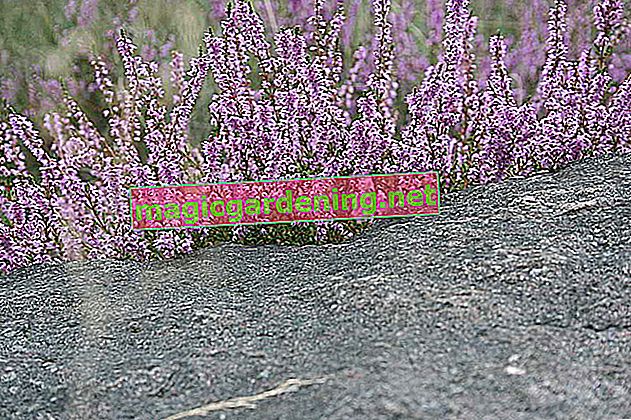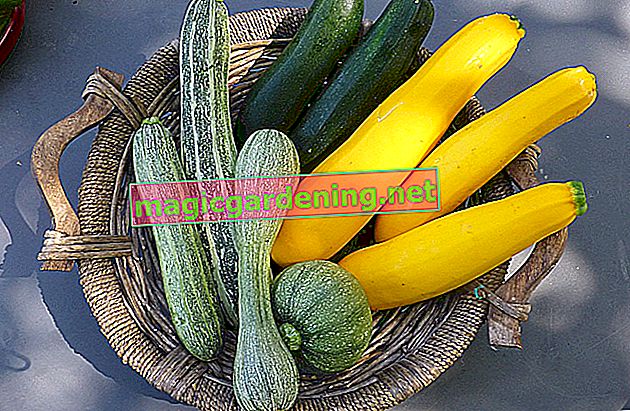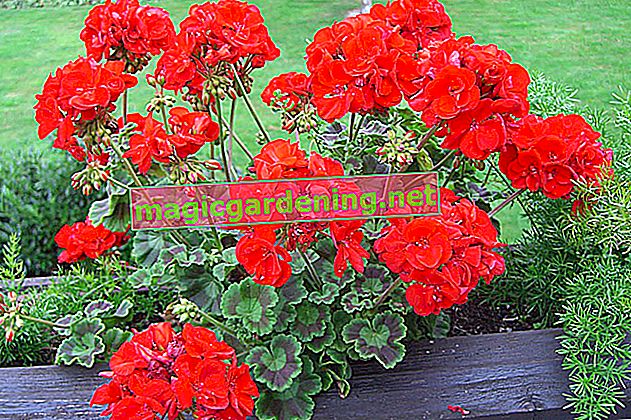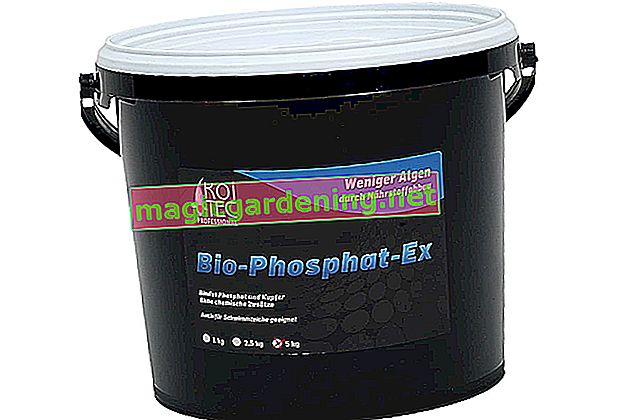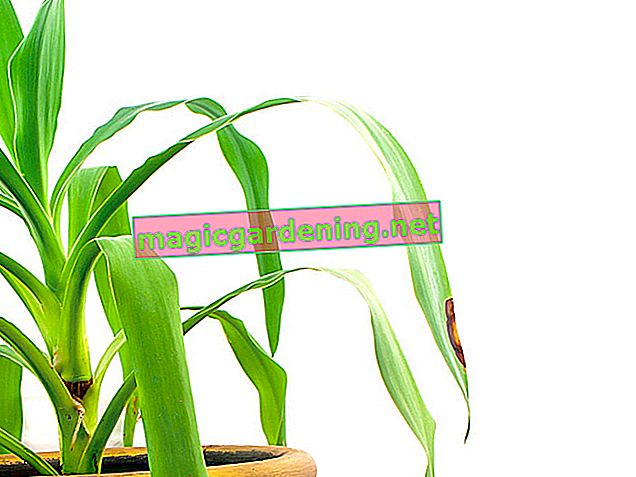
Origin and Distribution
Various types are available in stores under the name “star flower”. This article is about the single-flowered spring star (bot. Ipheion uniflorum or, according to the new scientific classification, Tristagma uniflorum), an onion flower species belonging to the subfamily of the leek family (bot. Allioideae).
also read
- Is the star flower hardy?
- Plant and care for the Andean fir
- Plant and care for rushes
The pretty spring bloomer has its home in the climatically temperate zones of Uruguay and Argentina, where it is numerous in the grass steppes of the Andes. There are also larger natural occurrences in France and in the south of Great Britain, as the species was naturalized there a few years ago through the naturalization of garden forms.
use
The star flower is a spring bloomer that cuts a fine figure both in the bed and as a container plant on the balcony or terrace. The species unfolds its special effect especially in combination with other early blooming and color-coordinated flowers and perennials such as:
- Iris hybrids, dwarf iris
- Dwarf tulip (bot.Tulipa polychroma)
- Hyacinths (bot.Hyacinthus orientalis)
- Small grape hyacinths (bot.Muscari botryoides)
- Gold crocus (bot. Sternbergia lutea)
Furthermore, you can combine the pretty plants with many other rock garden plants, whereby the white flowering species in front of gray-leaved perennials are particularly effective.
Appearance, leaves and growth
The star flower, which can reach a height of no more than 20 centimeters, is a so-called onion flower, which, after the early spring shoots, retreats into its wintering organs in the earth in good time before the great summer heat. In autumn some leaves appear again, which also overwinter. The fleshy, basal leaves can be up to 25 centimeters long and are very narrow. The slight smell of leek, which reveals the close relationship with leeks, onions, etc., is characteristic.
Blossoms and flowering period
In contrast to the slightly sharp leaves, the delicate flower stars, up to four centimeters in diameter, exude a delicately sweet scent. The six broad and slightly tapering petals have a light, violet-white color in the wild form. There are also many cultivars with white, purple, blue or pink flowers. Star flowers inspire with an unusually long flowering time for spring bloomers: From the end of March and into May, the distinctive flower stars can be admired.
If star flowers on sale in stores have other flower colors than those specified (e.g. yellow or orange), they are species that look similar but are different.
Toxicity
For some time now the star flower has also been marketed as “Andean garlic”, because the leaves and flowers, which have a slight taste of chives or garlic, can be cut into small pieces and used as a garlic substitute for many dishes and as an edible salad decoration. Caution is advised, however, because Ipheion contains high concentrations of the steroid ecdysterone, which is also slightly toxic for humans and pets, which is supposed to initiate the healing process in insects and crabs. Scientists suspect that the plant wants to protect itself from predators or pests in this way. The species also contains various saponins, which can also cause mild symptoms of intoxication such as nausea, vomiting, headaches or dizziness.
Which location is suitable?
In terms of its location, this is quite undemanding in terms of a barren, mountainous Andean flower. It grows in both sunny and partially shaded places, provided they are protected from the glaring midday sun. It is ideal to plant them in a location that is only exposed to the sun in the morning or afternoon, as this most closely matches their natural environment of grassy mountain slopes. Star flowers thrive particularly well on the edge of or under ornamental shrubs and under tall, sparse trees. However, it should still be light and sunny here, as the plant does not sprout and bloom in the shade. Furthermore, the bulbs can be distributed in the lawn, so that the green carpet is covered with numerous colorful flowers in spring.
ground
According to their natural location, star flowers also prefer a soil in the bed that must not be dry or wet. A sandy-loamy, well-drained, loose soil rich in minerals and nutrients is ideal. Planting in rock gardens or steppe beds is ideal.
Cactus soil mixed with clay granulate is recommended for bucket specimens.
Plant star flower correctly
Even if some catalog text promises something different: Star flowers are best planted in autumn, as otherwise they get out of their seasonal rhythm. Place the onions in the bed between September and November as follows:
- Punch a planting hole in the ground using a piece of wood.
- ideal planting depth depends on the variety
- most varieties should be planted between twelve and six inches deep
- Plant spacing between 10 and 15 centimeters
- Up to 100 bulbs can be planted per square meter for a dense carpet
- Fill the planting hole with sand
- Put the onion inside
- Fill in the soil and press on
- Water the planting area
In spring, young plants that have already sprout (and often already blooming) are available, which you can either cultivate in pots or plant out in the garden bed. The latter, however, have a habit of quickly retreating into the bulb after planting.
Watering and fertilizing
In terms of care, the onion flowers are very easy to cultivate: Planted star flowers should only be watered after planting and if it is very dry during the flowering period. If, on the other hand, the plants have faded and have drawn in their leaves before the summer break, they should be kept dry. Additional fertilization is also not necessary.
However, star flowers kept in planters should be watered regularly and given a low dose of potted plant fertilizer between April and September. After repotting in fresh, nutrient-rich substrate, however, no fertilization is necessary for eight weeks.
Cut star flower correctly
Basically, pruning is also not necessary. If you want to tidy up the bed after the flowering period and cut off the faded stems, it is best to wait until they have completely yellowed and dried up. The onion pulls the existing nutrients from the flower stalks and stores them for the next shoot. On the other hand, if you remove them too early, a nutrient deficiency may result and the onion may not sprout again. The same rule applies to foliage that turns yellow in summer.
Propagate star flower
Occasionally it is recommended to dig up the mother onions every few years, remove the daughter onions and replant them all together. Basically, however, this procedure is completely unnecessary, since the starflowers reproduce very reliably and can form dense carpets over time. For this to happen, however, the bulb flowers need an optimal location in terms of sunlight and soil, but where you have to leave them alone. For a lawn, for example, this means that it must not be mowed - because, as already described in the “Cutting” section, the faded stems and the leaves should be yellowed and dried out before they are cut back.
Overwinter
As typical mountain plants, star flowers are absolutely hardy in our country and can withstand freezing temperatures of up to minus 25 degrees Celsius. Therefore, you don't have to dig up the bulbs in the fall (like the bulbs of the dahlias), you can simply leave them in the ground. Only the leaves that appear in autumn need frost protection. To do this, however, it is sufficient to cover them with spruce branches.
Specimens cultivated in pots also need winter protection, as the small amount of soil in the planter does not protect them from freezing through. These plants are best kept in a bright and cool, but frost-free, location during the cold winter months.
Tips
In regions with a strong vole infestation, you should only bury the bulbs with suitable protection, as the pests like to eat them.
Species and varieties
The genus Ipheion, to which the star flower belongs, belongs to the asparagus-like order and is closely related to leek plants such as garlic, leek, chives and onions. Regarding the classification in the genus Ipheion of this and other star flower species, however, it is currently unclear, which is why a scientific re-sorting is currently being carried out. Ipheion is the old botanical name that is still used by many traders - but sometimes also offered under the new generic name Tristagma. But whether Ipheion or Tristagma - it is always the desired star flower, of which the following varieties make themselves particularly beautiful in the garden:
- 'Album': brilliant white flowers, flowering time between February / March and into May
- 'Alberto Castillo': particularly large, also bright white flowers
- 'Charlotte Bishop': pale pink flower stars with darker colored central ribs
- 'Froyle Mill': bright, deep purple flowers
- 'Jessie': intense purple-blue flower stars
- 'Queen Fabiola': violet-blue flower stars that are arranged with up to 20 individual flowers on an umbel
- 'Lilacinum': light purple flowers
- 'Rolf Fiedler': bright gentian blue, very large flower stars, long flowering time
- 'Whiskey Blue': pretty sky-blue flowers
Star flowers of the genus Triteleia
These species, also known as spring stars, are easy to confuse with the star flower described above. In fact, the plants look quite similar, but triteleias become significantly larger and bloom later. The following species are mainly cultivated in the garden:
- White Triteleie (bot. Triteleia hyacintina): flower balls up to 60 centimeters high with many white individual flowers, as cut flowers and for stone and steppe gardens
- Yellow Triteleie (bot. Triteleia ixioides): up to 80 centimeters high, golden inflorescences with up to 30 yellow individual flowers
- Blue Triteleie (bot. Triteleia laxa): up to 70 centimeters high, numerous light to dark purple-blue flowers
Triteleia bloom between May and June, depending on the species and variety.
 Astrantia 'Sparkling Stars Pink' 6.37 EUR Buy at baldur
Astrantia 'Sparkling Stars Pink' 6.37 EUR Buy at baldur

